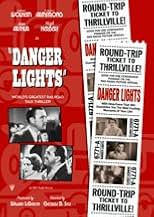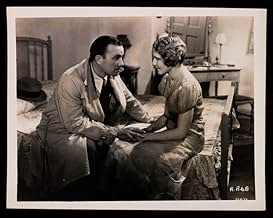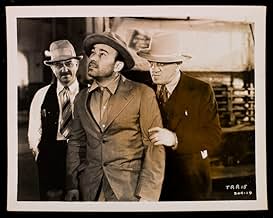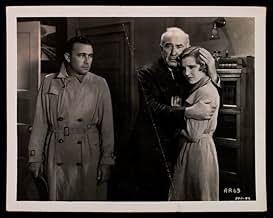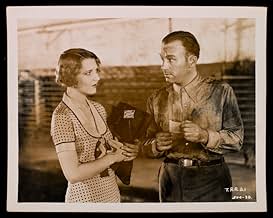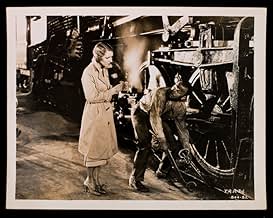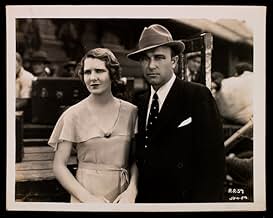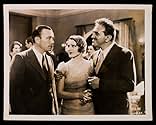The tough boss of a railroad yard befriends a young hobo, and unwittingly places in jeopardy his relationship with the woman he loves.The tough boss of a railroad yard befriends a young hobo, and unwittingly places in jeopardy his relationship with the woman he loves.The tough boss of a railroad yard befriends a young hobo, and unwittingly places in jeopardy his relationship with the woman he loves.
Jim Farley
- Joe Geraghty
- (as James Farley)
James Donlan
- Picnic Barker
- (uncredited)
Frank Mills
- Hobo
- (uncredited)
Lee Phelps
- Railroad Worker
- (uncredited)
- Director
- Writer
- All cast & crew
- Production, box office & more at IMDbPro
Featured reviews
I was lucky enough to tape a copy of this once when the local public television station ran it (no commercials!) cause it sure is hard to find. Its not the kind of movie you watch for the story (though it has one) or for it's great acting (its about as bad as "Plan 9 from Outer Space") but if you enjoy trains and a look back at all the work that went on behind the scenes to keep them running, this is the movie for you. One of only a few movies shot in "Natural Vision." I would love to see this projected in a theater where the large vistas would rally come alive.
Making allowances for the fact that I saw an abbreviated version of Danger Lights, I'd still have to say that this film is as far as the story goes nothing terribly special. But I have friends who belong to a group called Railroad Enthusiasts and if they haven't seen this movie it ought to be required for those who want to join.
The scenes involving the work in the railroad yards and the trains themselves are the best thing about Danger Lights. It's very reminiscent to the classic Burt Lancaster film The Train of which a good deal is set in the Paris railway yards. I wouldn't be surprised if John Frankenheimer saw Danger Lights and took a lot of ideas from it.
As for the plot it's a simple one, a love triangle involving Louis Wolheim the tough boss of the yards, a young hobo played by Robert Armstrong who was a former railroad worker to whom Wolheim gives a second chance and Jean Arthur the daughter of a disabled former railroad worker whom Wolheim boards with and takes care of. Arthur respects and loves Wolheim, but can't see him as a romantic figure.
I think you can take it from there. You will not see any of the comedic style that we saw with Jean Arthur in her top years, she's merely a romantic ingénue and the object of the affections of all.
The railroad and the yards are the real stars of Danger Lights. And this review is dedicated to that intrepid band of railroad enthusiasts.
The scenes involving the work in the railroad yards and the trains themselves are the best thing about Danger Lights. It's very reminiscent to the classic Burt Lancaster film The Train of which a good deal is set in the Paris railway yards. I wouldn't be surprised if John Frankenheimer saw Danger Lights and took a lot of ideas from it.
As for the plot it's a simple one, a love triangle involving Louis Wolheim the tough boss of the yards, a young hobo played by Robert Armstrong who was a former railroad worker to whom Wolheim gives a second chance and Jean Arthur the daughter of a disabled former railroad worker whom Wolheim boards with and takes care of. Arthur respects and loves Wolheim, but can't see him as a romantic figure.
I think you can take it from there. You will not see any of the comedic style that we saw with Jean Arthur in her top years, she's merely a romantic ingénue and the object of the affections of all.
The railroad and the yards are the real stars of Danger Lights. And this review is dedicated to that intrepid band of railroad enthusiasts.
I, too, originally saw, and taped, the film from a local PBS channel, and agree with a previous reviewer that it is a difficult film to find. As to the film: the story-line is typical and the acting acceptable; the real "star" of the film is the railroad itself. Made in 1930 during the Age of Steam, the film vividly shows the long-vanished skill and dedication required to keep the trains running. Louis Wolheim plays the hard-as-nails superintendent (such men actually existed) who was absolutely dedicated to maintaining the schedules ("hold up the 'Olympian!' Are you off your nut!"). Filmed on location in Montana on the long-abandoned Milwaukee Road railway, this film is an absolute Must for rail fans who love steam.
The heart of this story is a retelling of the Arthurian love triangle. This time around the King rules a Milwaukee Road Railroad Yard with a brick-to-the-side-of-the-head management style not currently taught in the better business schools. He takes a wandering knight (in the guise of a hobo) under his wing only to have the knight and the Queen (O.K. the fiancé) fall in love.
Among the rest of the cast Hugh Herbert does a fine turn playing a Knight of the Road in almost Shakespearen comic relief. Other players do an adequate job, but the real star of the show is the period railroad equipment and operations. Towards the end of the movie we see some great shots of Chicago in the opening days of the Depression.
If you love trains this movie is a must. If you want another reason to see Jean Arthur the movie is worth a try.
Among the rest of the cast Hugh Herbert does a fine turn playing a Knight of the Road in almost Shakespearen comic relief. Other players do an adequate job, but the real star of the show is the period railroad equipment and operations. Towards the end of the movie we see some great shots of Chicago in the opening days of the Depression.
If you love trains this movie is a must. If you want another reason to see Jean Arthur the movie is worth a try.
I give this film six stars, but it will likely be either a five or eight star movie for you depending on what interests you. 1930's "Other Mens' Women" was a love triangle set around the railroad yards. Conversely, "Danger Lights" is almost a documentary on railroads as they existed in 1930 with a love triangle thrown in to frame the railroad footage. It's almost like the filmmakers knew they were really documenting history more than filming a love story. You've got footage of a tug of war between two steam locomotives, actual documentary footage of the activities in the Miles City railroad yard, and to top it all off is the only footage of a dynamometer car from the steam railroad era. Since the emphasis is on the technology, you'd think this film would have the awkward dialogue of the early talkie era, but you'd be wrong. The actors behave and speak quite naturally. To top it all off, you're rewarded with a very early talking screen appearance by Jean Arthur who will become one of the great comic stars of the 1930's.
As for the love triangle, it's very formulaic. Railroad division chief Dan Thorn (Louis Wolheim) decides to help out drifter Larry Doyle (Robert Armstrong) with a job as fireman. Unfortunately for Thorn, it's basically love at first sight between his fiancé Mary Ryan and Larry. Dan and Mary have had an understanding for years. On Dan's part it's true love, but on Mary's part it has largely been gratitude for Dan supporting herself and her father after he was injured on the job. Dan doesn't notice what's going on between Mary and Larry because in actuality there is another woman in his life too - the railroad he runs.
If the love story doesn't impress, the imagery certainly will. Lots of time is spent showing men battling both machine and the elements trying to keep the trains going. Plus there's a pride in what they do that almost makes them all a part of the railroad themselves.
As for the love triangle, it's very formulaic. Railroad division chief Dan Thorn (Louis Wolheim) decides to help out drifter Larry Doyle (Robert Armstrong) with a job as fireman. Unfortunately for Thorn, it's basically love at first sight between his fiancé Mary Ryan and Larry. Dan and Mary have had an understanding for years. On Dan's part it's true love, but on Mary's part it has largely been gratitude for Dan supporting herself and her father after he was injured on the job. Dan doesn't notice what's going on between Mary and Larry because in actuality there is another woman in his life too - the railroad he runs.
If the love story doesn't impress, the imagery certainly will. Lots of time is spent showing men battling both machine and the elements trying to keep the trains going. Plus there's a pride in what they do that almost makes them all a part of the railroad themselves.
Did you know
- TriviaFeatures rare footage of a tug of war between two steam locomotives, actual documentary footage of the activities in the Miles City yard, and what is believed to be the only motion picture footage of a dynamometer car from the steam railroad era.
- GoofsThe locomotive that arrives in Chicago is not the same one that started the journey. When Larry adds oil to the smoking "hotbox" en route, for example, the wheel has an outside journal box that he puts the oil into from a can. The locomotive that arrives in Chicago has an inside journal on this wheel (under the cab), a different type from the one it had earlier.
Details
- Release date
- Country of origin
- Language
- Also known as
- Señal de alarma
- Filming locations
- Miles City, Montana, USA(railroad shops)
- Production company
- See more company credits at IMDbPro
- Runtime
- 1h 14m(74 min)
- Color
Contribute to this page
Suggest an edit or add missing content

